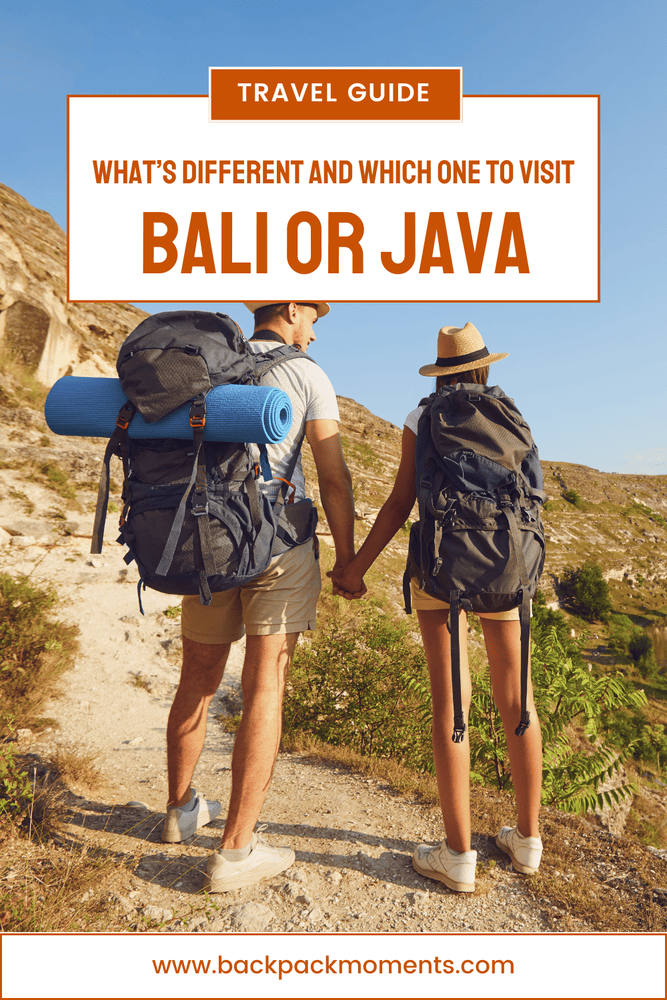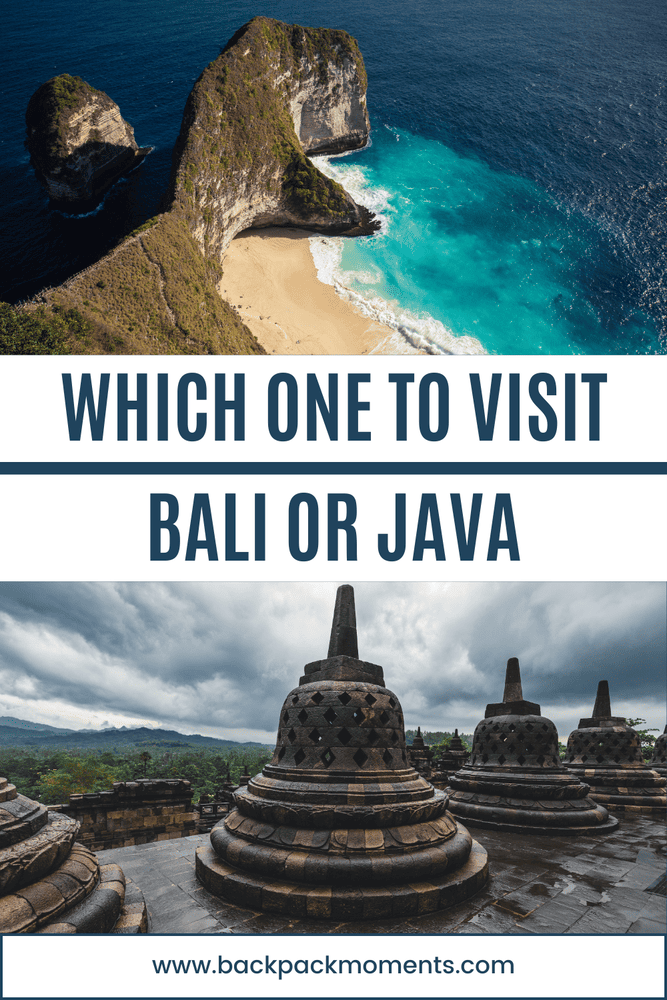Bali or Java? What’s Different and Which One to Visit!
This post may contain affiliate links. If you make a purchase using one of these links, I may receive a small reward at no extra cost to you. See my Disclosure Policy for more information.
Out of the over 17.000 islands that form Indonesia, two stand out the most when it comes to tourism: Bali and Java.
Bali, the world-famous holiday destination is a compact packing of beaches, surfing, Hindu culture, waterfalls, and an international crowd.
On the other hand, Java, the most populous island, offers a more rugged travel experience complete with volcanoes, ancient temples, big cities, and a little bit here and there of what Bali has.
So assuming you can’t visit both (which you should), which one to go to: Bali or Java?
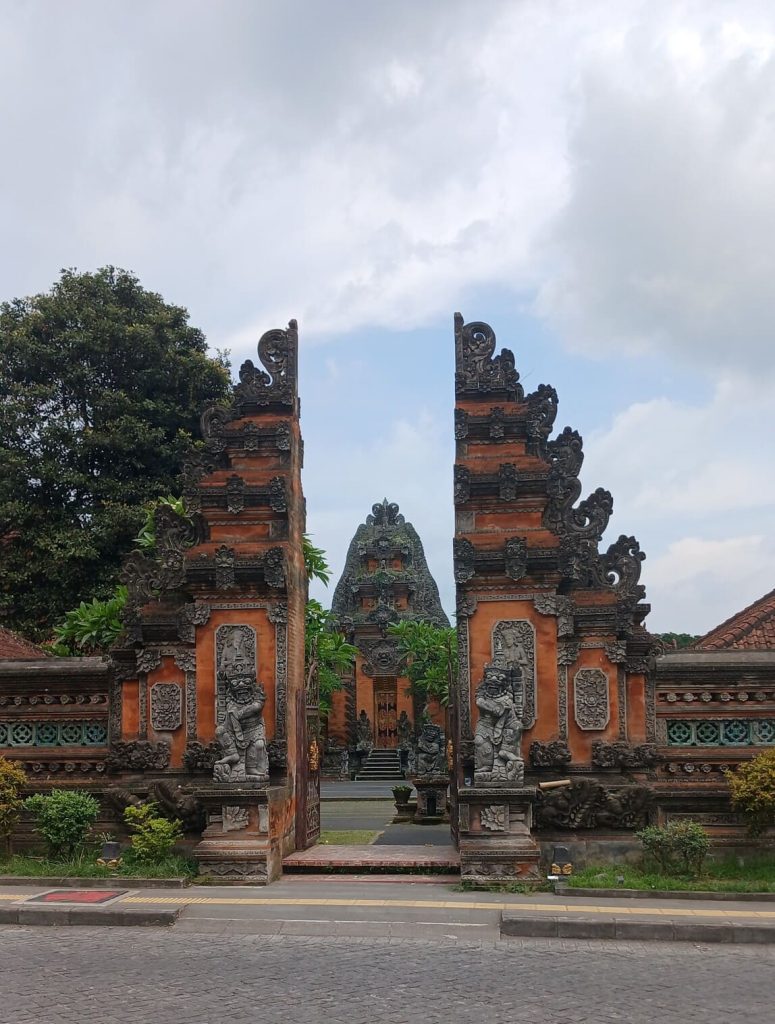
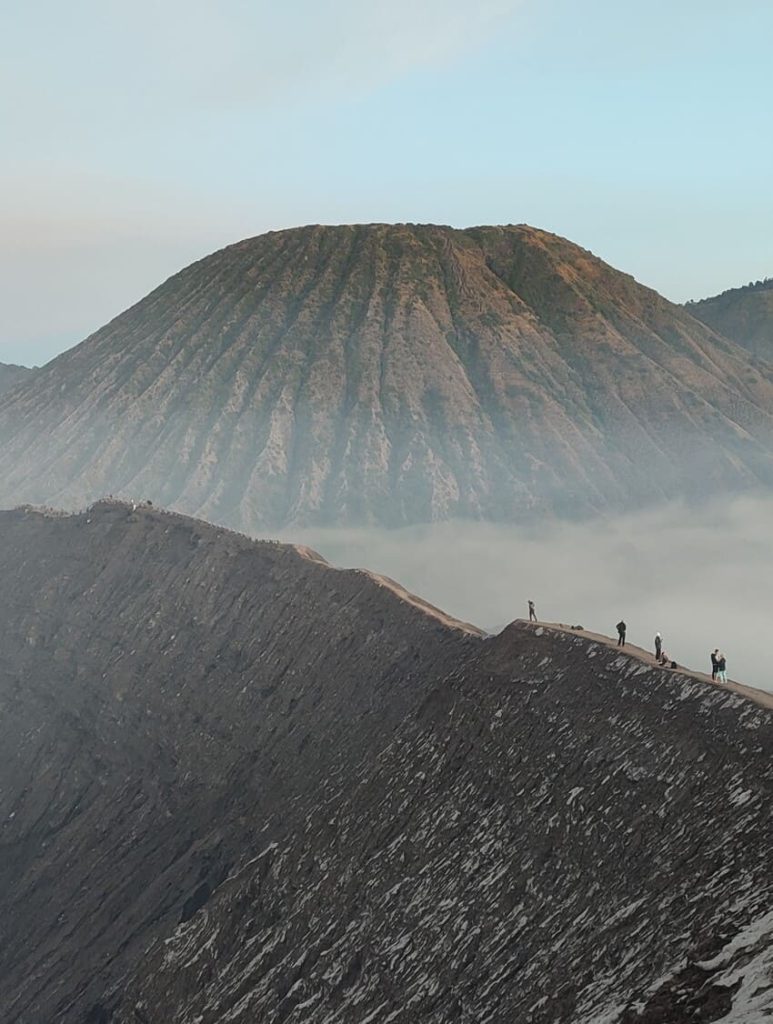
Here’s my honest comparison of the two in a couple of categories.
Bali vs Java at a Glance
This comparison table is based on my perceptions of the two islands. I’ve been to both Java and Bali a couple of times with over 9 months spent in total on Java and over 2 months on Bali, so to some extent, you can trust me.
| If you want: | Go go: |
|---|---|
| Surfing & Beaches | Bali |
| Volcanoes | Java |
| Partying | Bali |
| Lower prices | Java |
| Less traveling around | Bali |
| Ancient temples | Java |
| Easier travel (read: Westernized) | Bali |
| Shopping in big malls | Java |
| Fancy villa next to a rice terrace | Bali |
| More authentic | Java |
What’s Bali All About?
Let’s start with the fact that you can fit 23 Balis inside Java and still have space for the nation of Tuvalu.
That’s the main appeal of Bali – it has everything tightly packed on a relatively small island. And if you remove the agricultural lands of Central and North Bali, you’re left with an even more dense tourism hotspot.
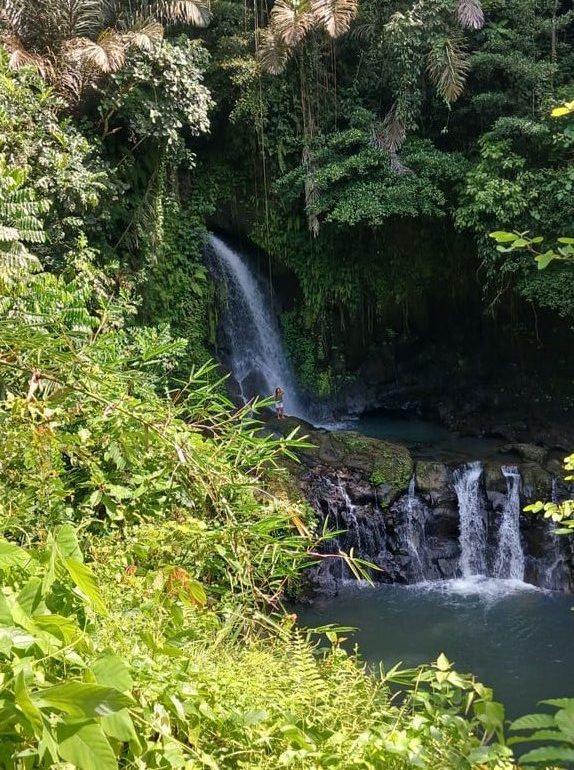
Within that tourism core, you can find everything you need for an awesome tropical holiday regardless of your preferences:
- Surfing on some of the world’s most spectacular breaks;
- Diving at fascinating sites;
- Luxury hotels, cute rural villas, cozy homestays, and backpacker’s hostels;
- Refreshing waterfalls;
- 3 volcanoes to climb;
- Countless beaches with pinkish-orange sunsets;
- Thousands of Balinese Hindu Puras (temples);
The travel and tourism industry is well-developed in Bali. There are more organized tours than you can choose from without suffering from FOMO.
Some places have even stopped looking like Bali due to gentrification, now more similar to Magaluf, Sunny Beach, or Cancun.
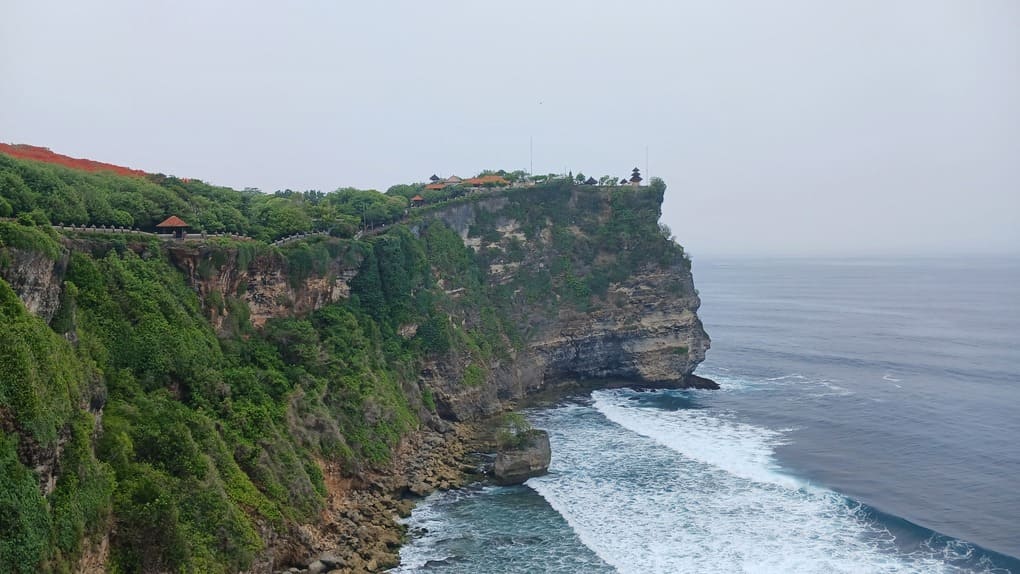
Some people say that Bali is about the vibe. But the vibe is so different between Ubud and Kuta and between Uluwatu and Sanur and between Nusa Dua and Lovina. Where to stay in Bali depends on what type of traveler you are.
Bali is about the fact that you have all that and more in such a small area.
What’s Java All About?
Java is the heartland of Indonesia. It’s the most populous island (57% of all Indonesians live there), the most developed, home to the capital (soon to change), and the largest city (and 4 of the top 5 largest cities in Indonesia).
It’s large too. It’s over 1050 km in length and it will take you at least 17 hours by car from one end to the other. Not to mention the rugged terrain that makes the otherwise narrow north-south span of the island feel a lot longer too.

This means that Java just has a lot more than Bali. There are more volcanoes, more beaches, more outlying islands, more cities, more temples, more everything.
But tourism is not as developed. Traveling in Java feels like you’re exploring off-the-beaten-track Indonesia. Locals are much more surprised to see you. You’re way more likely to interact with them in a meaningful, non-transactional way.

Java is about the journey towards discovering the old and how it coexists with the new Indonesian identity.
Direct Comparisons
Let’s do a Bali vs Java head-to-head!
Religion
Java is predominantly Muslim, whereas the Balinese are mostly Hindus.
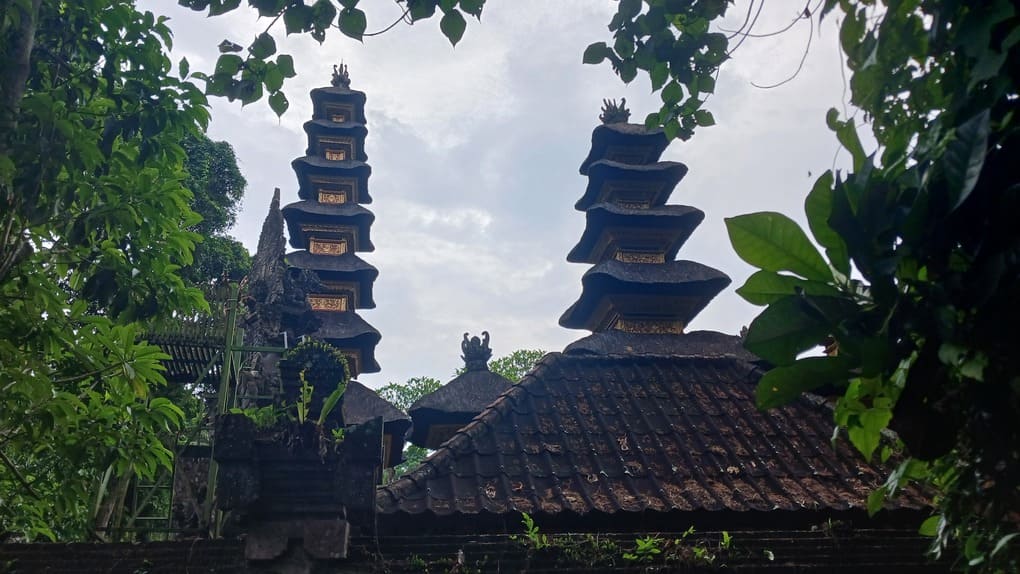
Both follow a very Indonesian form of their respective religion: Islam on Java is mixed in with many Hindu, Buddhist, and animistic beliefs (+the Javanese Kejawen), whereas Balinese Hinduism has diverged so far from the original it can easily be considered its own religion.
You will not have problems with religious freedom or religious requirements on either of the islands but Bali seems to be a bit more open-minded (perhaps due to the tourism industry).
Transport
On the micro level, both islands suffer from ridiculously bad traffic and some horrible jams.
On the macro level, Java has an awesome train network: reliable, frequent, cheap, and clean. Take a look at this guide about Jakarta to Yogyakarta trains to get an idea.

Bali’s public transportation is almost non-existent with just a few public bus lines. A light rail is in the making but it will not be usable soon.
On both islands reaching attractions is easiest by renting a scooter.
Food
In terms of the Indonesian staples, both Bali and Java are more or less the same.
Bali’s food includes some pork items (e.g. babi guling) which in Muslim Java is quite rare.
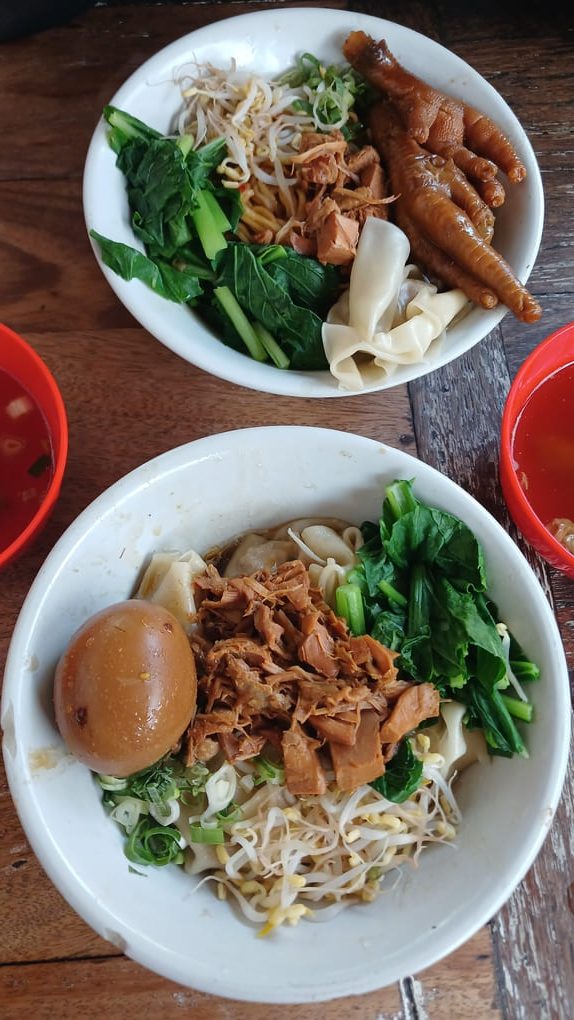
Bali is also home to some of Asia’s best restaurants if you’re into fine dining. Meanwhile, Java is most about your friendly ibu (mother) from the warung (small restaurant) in the kampung (neighborhood).
Prices
Java wins, hands down.
Owing to mass tourism, prices in Bali are way higher than in Java for comparative items.
Volcanoes
Bali has Agung, Batur, and Beratan and neither of them is something exceptional.
Java has Kawah Ijen, Bromo, Merapi, Merbabu, Semeru, Tangkuban Perahu, the Dieng Complex, Sumbing, Krakatoa, and at least 40 more. Some of them are truly one-of-a-kind experiences (I’m looking at you Ijen!).

Waterfalls
Bali is famous for its waterfalls, tucked away in gorgeous jungles. You can go from one to another in a matter of minutes and on a slow day visit at least 7.
Some are huge (Sekumpul), some are small. You won’t be starved for choice.
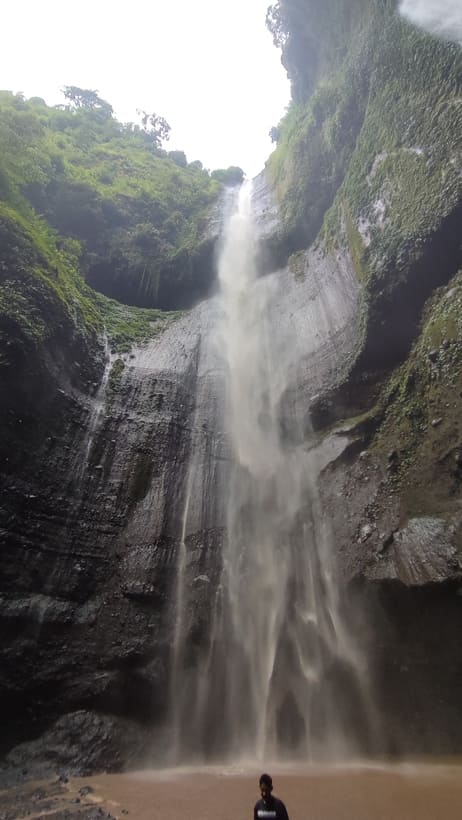
Java also has many waterfalls, but they are spread around the island, so it’s one per day max in most cases.
Some are quite spectacular: just look at Tumpak Sewu or Madakaripura, the second tallest in Indonesia.
Temples
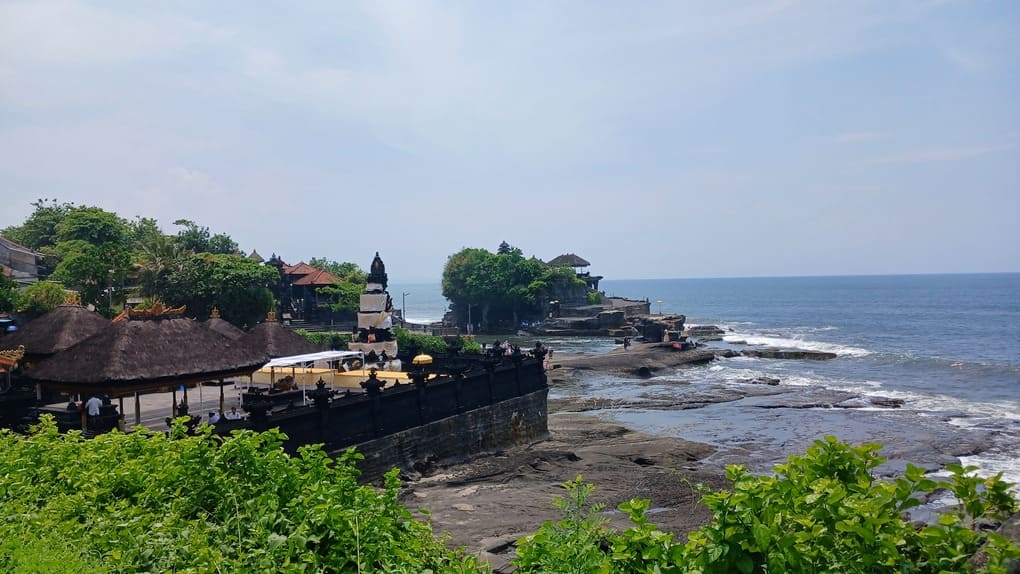
Bali’s temples are of the Hindu variety. They are ornate, exquisite, and cool to look at, but there’s little diversity. Once you visit Tanah Lot, Uluwatu, Besakih, and Lempuyang, they will all seem a bit repetitive.
Java’s rich history of Hindu and Buddhist empires means you can find some true Tomb Raider-style gems.
Borobudur and Prambanan are, of course, top of the list, but there are over 20 more just around Yogyakarta. And countless more dotted around the island, like in Dieng Plateau or around Malang.
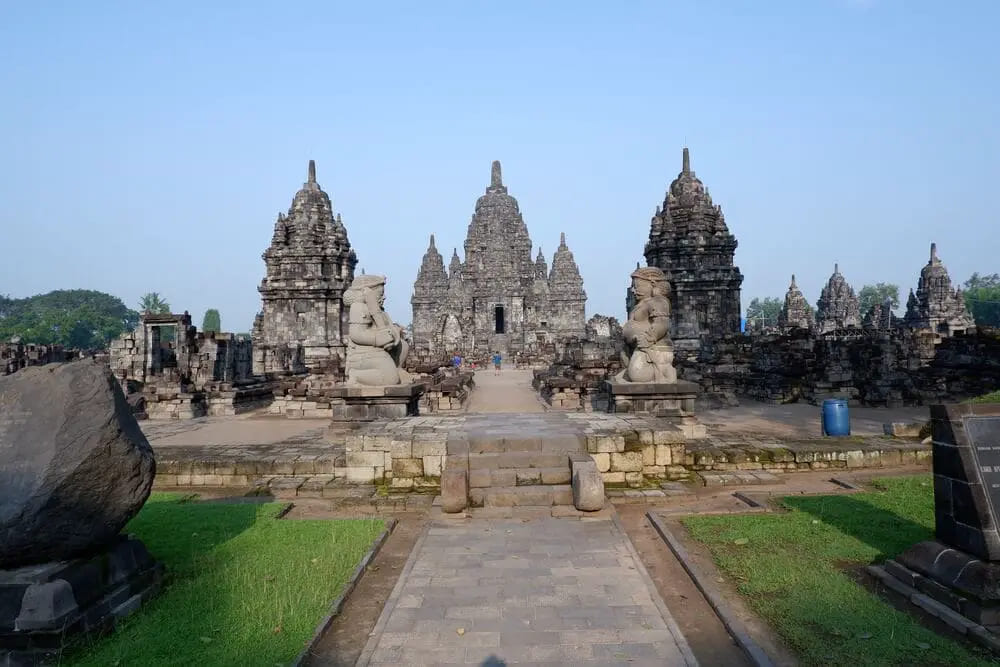
UNESCO Heritage Sites
Java has the natural site of Ujung Kulon National Park, as well as 4 cultural sites:
- The Cosmological Axis of Yogyakarta
- Borobudur Temple
- Prambanan Temple
- Sangiran Early Man Site (near Surakarta).
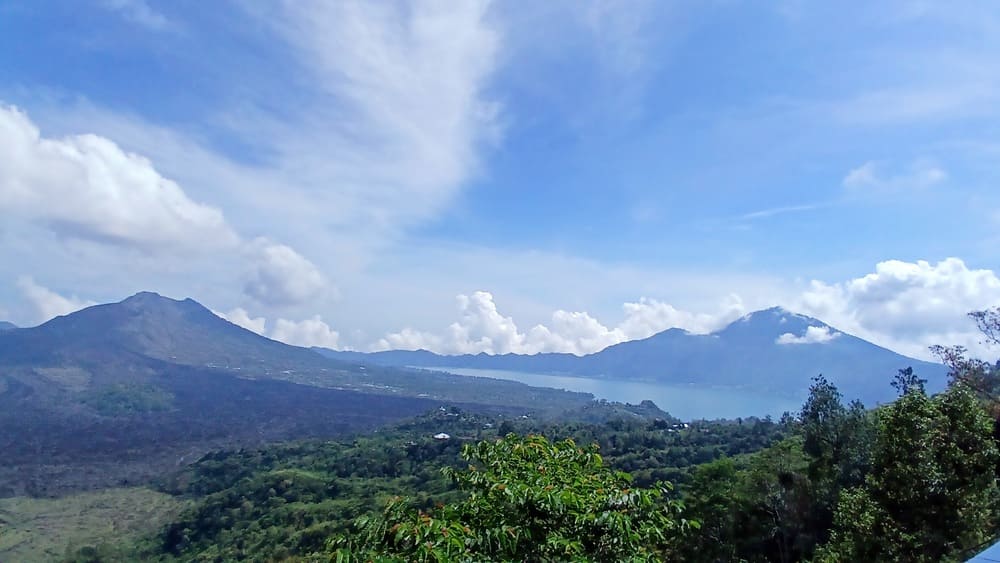
Bali has just 1 natural site – the Subak Irrigation System. It’s featured in many places in Bali, for example, the Water Temple at Lake Batur (and the lake itself), and various landscapes of rice terraces.
Bali has other unique things to do; however, they are not part of UNESCO.
Cities & Shopping
Bali’s big city is Denpasar with around 800.000 people, but you can find Bali’s big shopping centers in Kuta and Seminyak. Find out more about the prices in Bali.
Java’s big cities are Jakarta, Surabaya, Bandung, Semarang, Malang, Yogyakarta, and the list can go on as long as you want it. If shopping in malls is your thing, hit some of the biggest in Southeast Asia in Jakarta and Surabaya. Quite cheap too!

Partying
Bali has more options: Canggu, Seminyak, Kuta, Ubud, Sanur…
But if you think there’s no partying going on in Java, you’re very wrong.
Hit the clubs in Jakarta and Surabaya for some partying like there’s no tomorrow, or mingle with the students in Yogyakarta to feel young again (unless you still are, then excuse me).
Which to visit first: Bali or Java?
Bali is more popular, easier to travel and more well-trodden. That’s why I say visit Bali first. And that is despite the fact that I’m obviously a little bit biased towards Java in this article.
I prefer more authentic experiences, more local culture, and less-touristy activities. If you’re like me, visit Java first! If this is the case, follow this outstanding 14-day Java itinerary!
What’s more, the itinerary will get you from Jakarta to Bali, so you can tick both islands off your bucket list. No need to backtrack either – both have big, well-connected airports. Win-win!
What about the island on the other side of Bali, to the east? This is Lombok – a much more laid-back tropical island waiting for you! Check my review and comparison of Bali vs Lombok!
